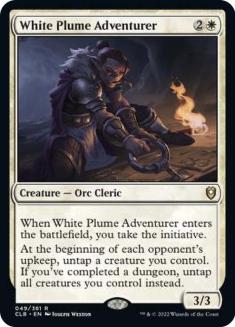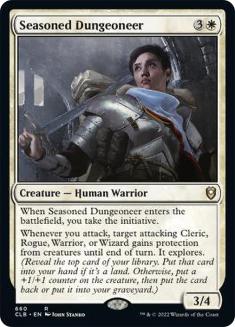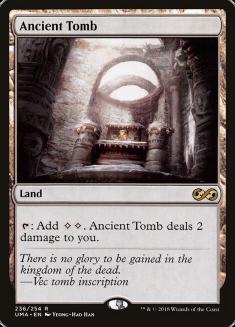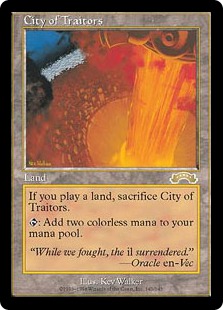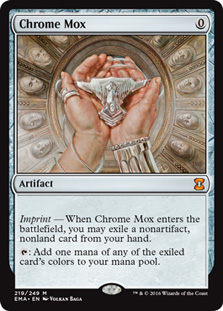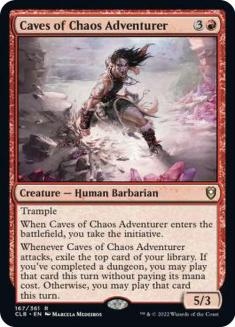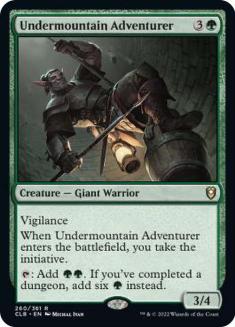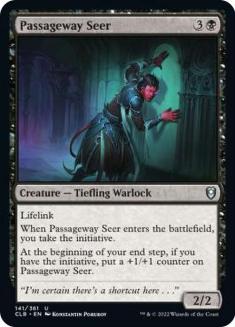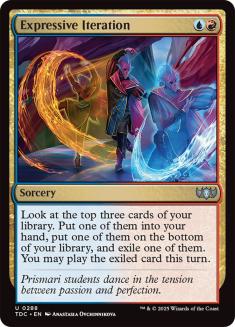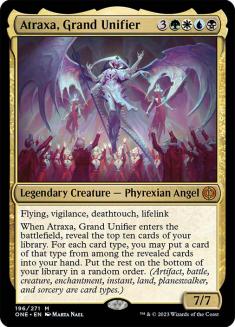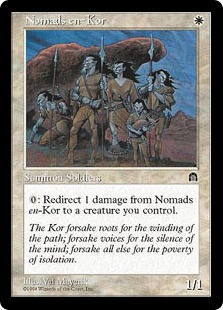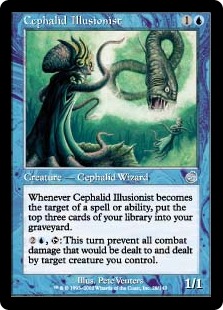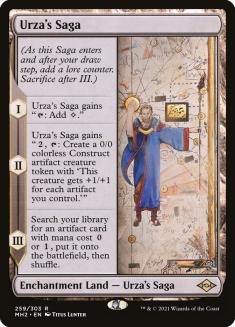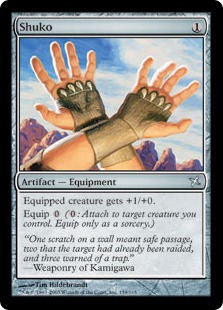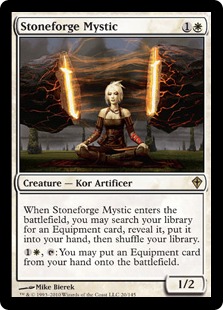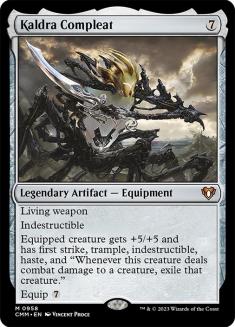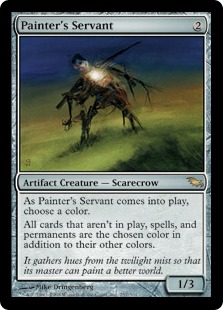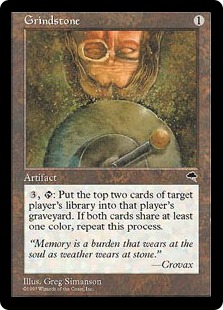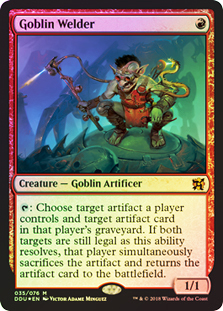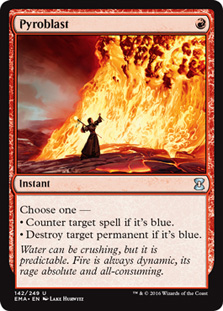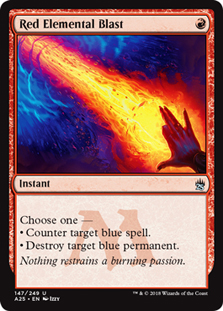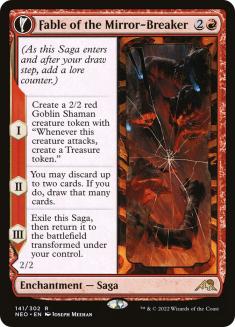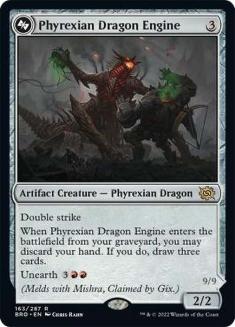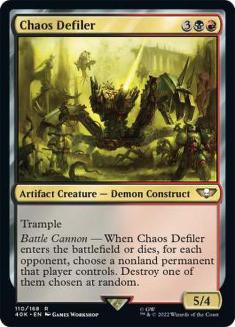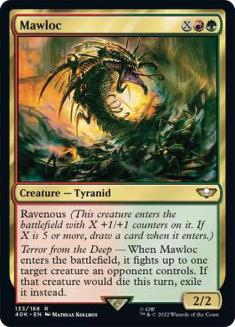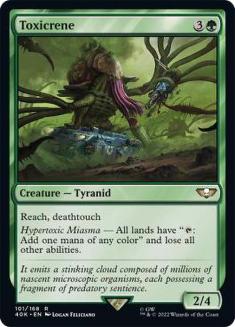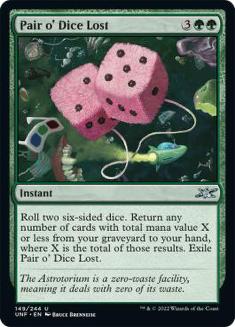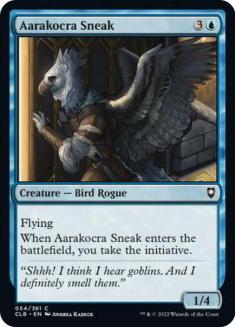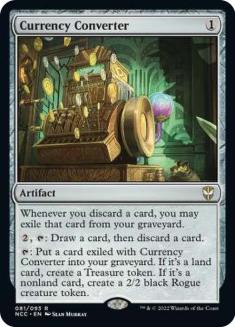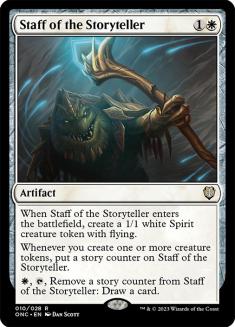Legacy was hit by a much-needed bolt from the blue last month. The bans of Expressive Iteration and White Plume Adventurer were mostly welcomed by the Legacy community – the main complaint was that they might be too little, too late. That community was smaller than ever, largely because the dominance of Izzet Delver and Mono-White Initiative had throttled the format for months, and even many Legacy obsessives who had stuck with it through thick and thin and were vocal advocates for the format were losing interest.
If you weren’t following Legacy in the first place, the White Plume Adventurer ban might be hard to understand – then again, if you’ve been out of the loop lately, this entire mechanic is a lot to take in.
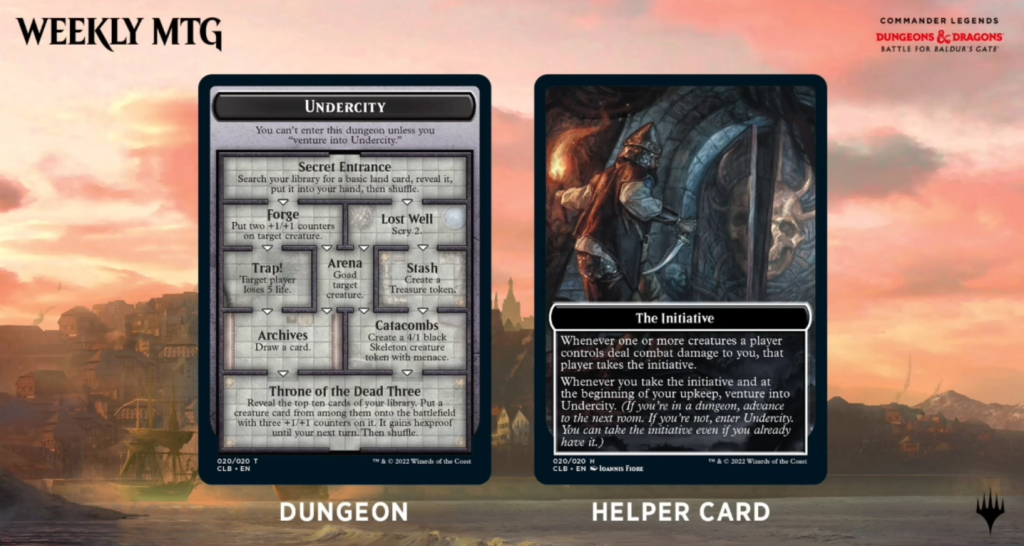
Once you wrap your head around an entirely new dungeon that only comes up with a small subset of cards from a non-mainstream set, you can try to gauge the power of these cards in the abstract – but are they really so good that one of them has to be banned in Legacy?!
Mono-White Initiative: A Catch-Up
Mono-White Initiative was the ideal form of an idea that’s as old as Legacy itself – using the format’s abundant fast mana, like Ancient Tomb / City of Traitors and Chrome Mox / Lotus Petal, to ramp into lock pieces like Chalice of the Void and cheap, hard-hitting threats. The other parts of that equation haven’t changed since the Mirrodin days, but the threats have had to evolve with the format – we’ve come a long way since the likes of Exalted Angel and Rakdos Pit Dragon.
White Plume Adventurer and Seasoned Dungeoneer were the best threats at filling that role that we’ve ever seen. You can imagine how the initiative is a risky proposition in longer games when the opponent has already built their battlefield, but a Turn 1 White Plume Adventurer runs away with the game like no other three-drop can. Against combo decks that can ignore that race, a fast Archon of Emeria or Anointed Peacekeeper would lock the game up by itself or put them on the back foot.
Problem and Solution
It was an odd change of pace to have a deck that could challenge Delver for the throne while holding its own elsewhere. The problem was that Mono-White Initiative replaced or forced out the other decks in that space. It beat the other Ancient Tomb decks and did their job better than they could. Legacy staple Death and Taxes felt like a worse version of Initiative; other anti-Delver decks like Selesnya Depths could complete that assignment, but were unacceptably bad against Initiative. Instead of a format with Delver as the clear best deck and a broad second tier below it, Legacy became more of a two-deck format where Delver and Initiative conspired to force out everything else.
Neutering Mono-White Initiative has made room for other Ancient Tomb decks – notably 8-Cast, which is one of the best performers in this young era of Legacy, and the old Mono-Red Stompy shells – and other Initiative decks using Simian Spirit Guide and Elvish Spirit Guide to jump to Caves of Chaos Adventurer and Undermountain Adventurer or Dark Ritual to power out Passageway Seer. Whether you want those decks around at all depends on your tolerance for those play patterns, but they are back to being among many options again.
Expressive Iteration
The banning of Expressive Iteration represented an understanding that previous approaches to reining in Delver had failed. Legacy was in a predictable rhythm for years. Some pushed threat or card advantage enabler would appear. It would find a home in the Izzet Delver shell because it had the most flexibility of any deck for absorbing these new cards. When Delver inevitably took over again, the new card would take the blame and the banning… until the next new threat came along.
The Legacy Banned List is a museum of all the cards framed for the crimes of Ponder and Daze, from Ragavan, Nimble Pilferer and Dreadhorde Arcanist to Lurrus of the Dream-Den and Wrenn and Six. If hitting the Delver core is unthinkable and banning the next threat just buys you some time, you have to look elsewhere. The key to Delver’s dominance is that it became the best at everything – it had the best interaction, best threats, and best card advantage. It thrived in the small games caused by cards like Daze and Wasteland but kept up in grindy games with Expressive Iteration and Mystic Sanctuary. Removing Expressive Iteration makes it possible to run Delver out of cards and forces it into a narrower, aggressive role.
Creatures (14)
Lands (19)
Spells (27)

That’s not to say Delver won’t fill that gap soon or won’t be back on top before we know it – but, for now, it’s nice to see it as one of many viable decks instead of the clear best deck.
The Combo Turn
Delver’s defenders warned the rest of us to be careful what we wished for – without Delver acting as a gatekeeper, combo decks would run rampant. There certainly has been an upswing in combo across the board, with Legacy classics like Storm or Sneak and Show reminding us they belong and old favourites like Mono-Red Painter or Cephalid Breakfast enjoying an unexpected resurgence, but there’s a pure combo deck hoping to validate all the worst fears of the sceptics.
Rakdos Reanimator
Creatures (12)
Lands (14)
Spells (34)
- 4 Reanimate
- 4 Animate Dead
- 4 Dark Ritual
- 4 Unmask
- 4 Exhume
- 4 Entomb
- 4 Lotus Petal
- 2 Thoughtseize
- 4 Faithless Looting
Sideboard

Rakdos Reanimator has a long Legacy pedigree of its own and is exactly the type of deck that flourishes in a more open format with fewer Force of Wills. It is heavily favoured in Game 1 against almost any deck and is ready to exploit anyone who doesn’t have enough tools to rebalance those numbers in the post-sideboard games. Izzet Delver was a problem because they could disrupt your best draws, had a lot of card filtering to find that disruption, and could apply enough pressure that you couldn’t always rebuild from a failed reanimation attempt to try again. These same factors allowed Delver to find and use its sideboard cards to good effect. The other Force of Will matchups are more forgiving.
Reanimator is also the most accessible Legacy deck in many important ways. In paper, it is relatively cheap, especially if you omit the various small splashes enabled by the original dual lands. Online, it is very efficient for tearing through Leagues or playing alongside other events. It’s easy to play and forces hard decisions on the opponent, with enough raw power to rack up a lot of free wins. If there’s a Legacy event on the docket, but you don’t know what to play, Reanimator is the easy default.
Dimir Reanimator
Atraxa, Grand Unifier became the go-to ‘big thing’ for decks like this across all formats upon its release, and that hype quickly spread to Reanimator in Legacy. Some noted that it was the rare crossover of a worthy reanimation target that also pitched to Force of Will, justifying a return of Dimir Reanimator and its greater consistency at the expense of raw speed.
Rakdos has remained the default. If you chose Reanimator for its accessibility, Dimir is worse in that regard – and, if you picked it for strategic reasons, it makes sense to focus on its strength as a linear deck. The blue splash opens up a fatal weakness to Pyroblast, which is still everywhere in Legacy, even though Volcanic Island isn’t the menace it used to be.
Dimir Doomsday
Creatures (11)
Lands (17)
Spells (32)

If Reanimator is an accessible combo deck, Doomsday is the exact opposite by every definition. It’s also a threat lurking over the format. If Delver drops the crown, Doomsday would pick it up. The matchup data told a clear story – Doomsday put up disturbingly good numbers against everything… except for a woeful Delver matchup. If that drawback isn’t what it used to be, Doomsday is the big winner.
Doomsday can be built as a pure combo deck, but the shell also allows for slower, combo-control versions like FGC’s boasting a range of creature threats. Another of Legacy’s oldest combo decks can attribute its own return to that flexibility:
Cephalid Breakfast
Creatures (15)
Planeswalkers (3)
Lands (20)
Spells (22)

The ‘Cephalid Breakfast’ combo uses the en-Kor creatures or Shuko to trigger Cephalid Illusionist over and over again for free, milling your entire deck. This combo was a blast from the past when I was getting into Magic and devouring its history nearly twenty years ago, so its current success triggers the nostalgia that makes Legacy at its best a beloved format for a certain generation of players.
The only upgrade to the combo itself in the past fifteen years is Thassa’s Oracle making winning trivial once your library is gone (just as in Doomsday above), but it owes its newfound flexibility to a Modern Horizons 2 all-star:
As in Modern, Urza’s Saga shines in decks where it finds a central combo piece as well as offering a self-contained backup plan. Shuko fills in for Nomads en-Kor to pair with Cephalid Illusionist, making it accessible via both Urza’s Saga and Stoneforge Mystic – which represents a real threat even in the rising tide of current designs, thanks to Kaldra Compleat.
These twin threats give your combo deck another route to victory that dodges the graveyard hate or other hosers that would hit the Cephalid combo – while also making that combo even more consistent.
Mono-Red Painter
If you like Sagas, I have the deck for you:
Creatures (19)
- 4 Goblin Welder
- 2 Simian Spirit Guide
- 4 Painter's Servant
- 4 Goblin Engineer
- 1 Breya's Apprentice
- 3 Fury
- 1 Phyrexian Dragon Engine
Lands (21)
Spells (20)
- 3 Lightning Bolt
- 2 Grindstone
- 4 Red Elemental Blast
- 3 Pyroblast
- 2 Lotus Petal
- 1 Mox Opal
- 1 Soul-Guide Lantern
- 4 Fable of the Mirror-Breaker
Sideboard

Mono-Red Painter is another deck that can kill you with its combo remarkably quickly, but is also capable of so much more. Once Painter’s Servant paints the town red (or any other colour of the rainbow), a Grindstone activation will pass its test every time and mill the opponent’s entire deck. Urza’s Saga finds that Grindstone, while Goblin Welder and Goblin Engineer put all the pieces in place.
With Painter’s Servant on blue, Pyroblast and the original Red Elemental Blast become the cheapest and most flexible interactive cards you could ever hope for – counterspells or removal for the opponent’s threats as well as protection for your own.
Maindeck Pyroblast is common in Legacy more broadly, given blue’s dominance of the format. This deck gets to play more copies than any other and find more uses for them.
If you do have a dead Pyroblast or something else wasting space in your hand, you have a lot of ways to convert that into a useful card. Fable of the Mirror-Breaker isn’t a format-defining card here as in Standard or Pioneer, but it’s still excellent. Fury is a lifesaver when cast for ‘free’ (Painter choosing red in a pinch can even let you pitch an excess land to it!), and hard-casting it is realistic thanks to Ancient Tomb and Lotus Petal / Simian Spirit Guide.
Lost in Translation
These ‘Mono-Red’ Painter lists don’t always bear that label willingly. The Warhammer 40,000 Commander decks were a goldmine for both casual and Eternal formats, but many of these cards are yet to make their way onto Magic Online (MTGO). Chaos Defiler is an eye-catching addition to the Goblin Engineer toolbox for Painter, letting Goblin Welder destroy several permanents in each turn cycle – at least in paper.
The Tyranids are no joke either – both Mawloc and Toxicrene are invaluable additions to the Green Sun’s Zenith toolbox in Legacy, but neither can be found on MTGO.
The same goes for Unfinity. Pair o’ Dice Lost looks like a strange gambling game, but it’s a rigged game in Storm variants where even snake eyes gets you back all your Lotus Petals, Lion’s Eye Diamonds, and another action spell. There are Storm lists that embrace a much heavier green component with this card as the main payoff, but online Storm enthusiasts are stuck in the past for now.
The initiative mechanic was the most glaring example of this. There were rumblings about the potential for a Mono-White Stompy deck powered by the initiative creatures, but the lack of relevant paper tournaments gave this idea few opportunities to shine, and the inability to test or compete on MTGO meant that it was locked out of the main platform for refining these ideas. Once MTGO caught up with the real world and added the main initiative creatures, the floodgates immediately opened and Mono-White Initiative was everywhere within the week.
Legacy Interlopers?
Many old-school Legacy fans wonder why these cards belong in Legacy at all. The original definition of Legacy as the format that has everything made more sense in a time when the mainstream Standard sets were the primary focus (though there were always strange edge cases like Portal). Now it means that any careless design in sets not aimed at competitive Magic at all risks affecting Legacy.
Unfinity is the most extreme example – the format marketed as the home for iconic older cards like Brainstorm and Swords to Plowshares is now laden with Attractions and stickers and who knows what else – but this is more of an aesthetic complaint. The Initiative cards showed how damaging this could be. Cards designed as a flavourful tie-in with another IP for use in multiplayer games throttled one of the most powerful Constructed formats.
There are some sweet cards in these sets, and I’m glad they can find a home – I look forward to looping some Chaos Defilers online eventually – but I think most Legacy enthusiasts would give those up if it meant not risking these system shocks.
Commander Crush
This same argument applies to the Commander products that accompany the Standard sets. There, my usual frustration is that I don’t get to play with these cards. I’s a common experience during preview season to see a card that gets my mind whirring with possible Pioneer or Modern decks, only to see the subtly different set code hiding at the bottom and feel disappointed.
The unique requirements of designing for Commander make these cards oddly well suited for Constructed. Even with the relaxed pace of casual multiplayer Magic, your deck can’t just be expensive cards – you need cards lower on the curve that enable your theme. These can’t be mainly about combat or stats when you have more opponents who each have more life – they have to give you resources that set up your bigger plays. This makes them perfect for Legacy, where cheap cards that shuffle resources around are exactly what you want.
Staff of the Storyteller
With that in mind, Staff of the Storyteller being the talk of the town isn’t surprising. The base case of a 1/1 that gives you a card back later is unimpressive, but it gets out of control quickly when paired with a second Staff or a reasonable number of token creators. This is a slow engine, but the defensive tools in Legacy are good enough to buy you that time.
Look at this list from Stefan Schutz, aka MentalMisstep:
Creatures (1)
Planeswalkers (1)
Lands (22)
Spells (36)

Urza’s Saga shines again in another totally different shell. The curve of Turn 2 Saga + Staff lets you create larger Constructs while loading up counters on Staff, and the final chapter can find Retrofitter Foundry to keep doing all of that every turn.
Shark Typhoon and Timeless Dragon join Saga as Staff enablers that also pair well with Standstill to create an even more crushing advantage in longer games. It’s really hard to picture this deck losing any kind of fair fight.
Jeskai Control
What if your control deck didn’t have to fight fair at all? Here’s the winner of the most important Legacy tournament of this new era:
Young prodigy Julian Jakobovits claimed his seat in the next MTGO Champions Showcase with a Jeskai Control deck with its own combo finish. Narset, Parter of Veils is an excellent card against many Legacy decks by itself, but it also finds Day’s Undoing consistently and turns it into a game-ending play by breaking its symmetry. Beyond that, the deck boasts a strong blend of the best control tools from the past few years and the classic control cards that are part of the draw to Legacy for Tundra fans everywhere.
This deck thrives against the other control decks and slower, more resilient combo decks that are popular in this wave of results. Filling your deck with sorcery-speed three-drops was hard to justify when the clear best deck could swat them away with Daze and Pyroblast. Now that the Delver shell has weakened, decks like this have more room to flourish.
Legacy has lost most of its former stability over the past few years, but for now it seems to be in a good place. Enjoy it while it lasts!


